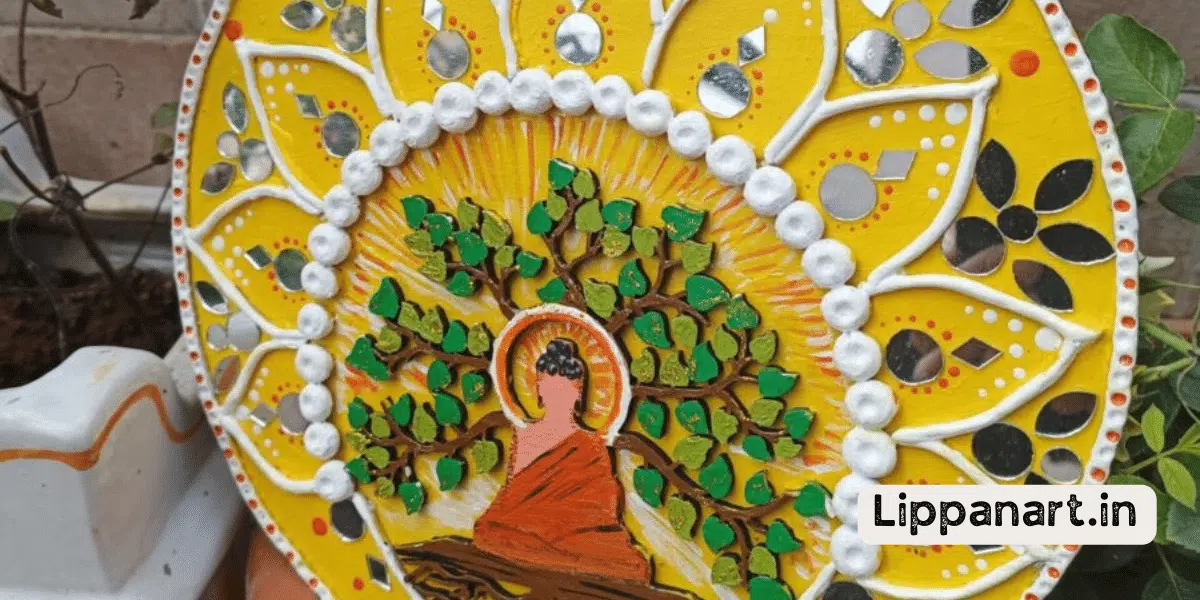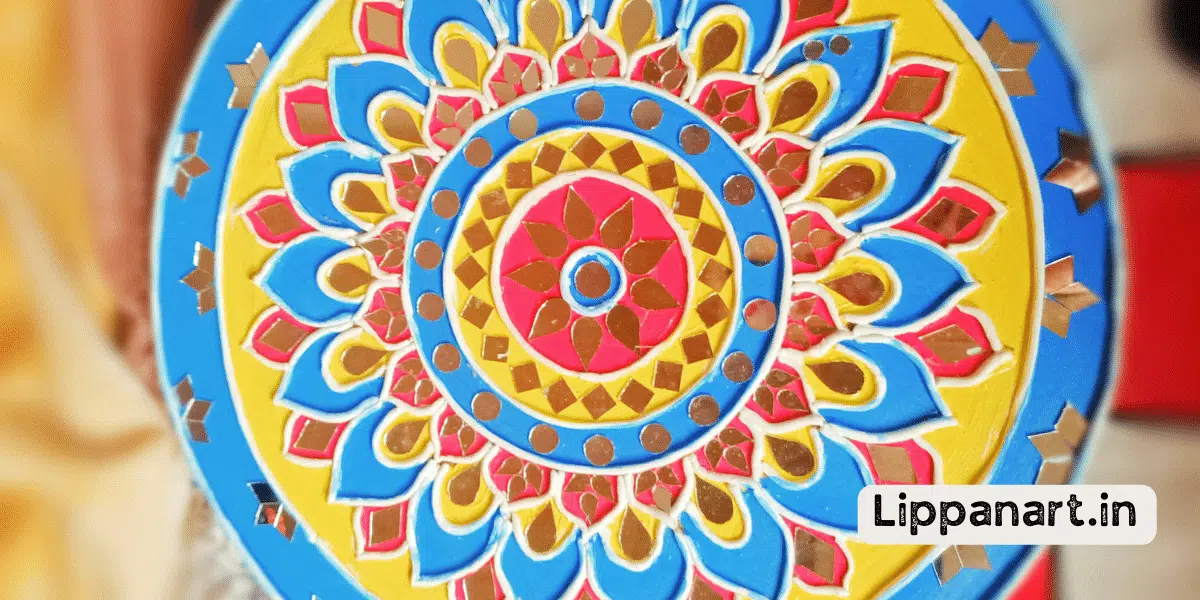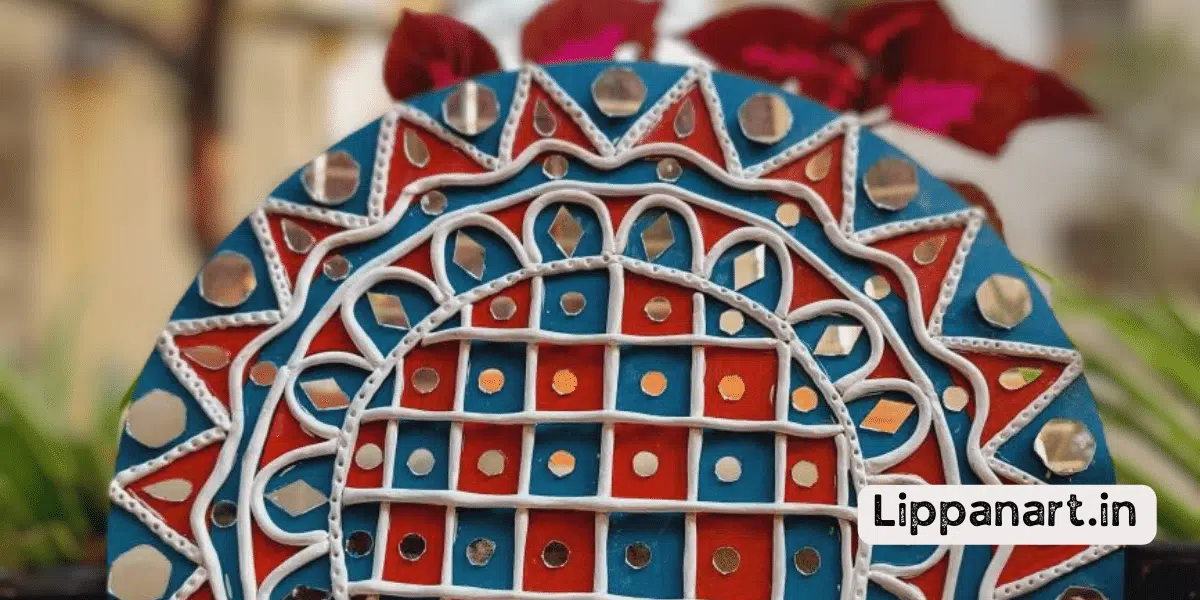Have you ever felt like you’ve ‘fallen’ out of your comfort zone? If so, then you can relate to the concept of Prelapsarian art. This form of art, derived from the Latin word lapsus, meaning ‘to slip or fall,’ is a unique way to explore the idea of change and transformation.
Come along with us and discover the beauty of Prelapsarian art, from its origins to its place in the modern world. Let’s take the plunge and explore the power of creation through this captivating art form.
Key Takeaways
- Prelapsarian art originated in 1879 and was popularised by Benjamin Dürer in the 16th century.
- It explores the spiritual and moral implications of the Fall and represents predestined eternal life or eternal death.
- Religion heavily influenced the symbolism, composition, and colours of prelapsarian art.
- Pre-modern art influenced prelapsarian art through its symbolism, composition, and colours, helping to visualise a world before the Fall.
Exploring the Origins of Prelapsarian Art
You can explore the origins of prelapsarian art, first seen in 1879, about the views of supralapsarian, sublapsarian, infralapsarian, and postlapsarian beliefs.
The term prelapsarian originated from the Latin lapsus, meaning ‘slip’ or ‘fall.’ Benjamin Dürer popularised the concept of prelapsarian art in the 16th century. Dürer believed that the Fall of Man was a necessary part of the divine plan and that art was a means of redemption.
Other prelapsarian artists embraced this idea, seeking to create works that could help bridge the gap between humanity and God. The prelapsarian movement also inspired many works of art that sought to explore the spiritual and moral implications of the Fall. Depictions of the Garden of Eden, Adam & Eve’s expulsion, and humankind’s suffering & redemption are common themes in these works.
Examining the Characteristics of Prelapsarian Art
To understand its spiritual and moral implications better, you can examine the characteristics of prelapsarian art, which arose in 1879.
Prelapsarian art emerged as an expression of the belief that humans were predestined to eternal life or death before the Creation and the Fall, as outlined in the Bible. This art reflects the spiritual and moral values of its time and serves as a reminder of the consequences of disobeying God.
As such, prelapsarian art has been instrumental in developing a national identity. It can be seen in the works of great painters, sculptors, and poets who sought to encapsulate their society’s spiritual and moral beliefs.
Using symbolism, colour, and composition in prelapsarian art can provide insight into the values of a culture and its impact on national development.
The Impact of Religion on Prelapsarian Art
You can explore how the religious beliefs of the period impacted Prelapsarian art by studying the symbolism, composition, and colours used in the works of great painters, sculptors, and poets.
Walter Benjamin, a German philosopher, suggested that pre-modern art was often symbolic of religious themes and beliefs. This symbolism was seen in the works of great artists such as Michelangelo, Da Vinci, and Rembrandt. These artists drew on religious stories and scriptures to express their spiritual beliefs.
Additionally, the composition of these works often featured religious symbolism in the form of saints, angels, and biblical characters. Colours were also used to convey religious messages. For example, red represented Jesus’ blood and passion, while blue symbolised purity and divinity.
All of these elements combined to create a powerful visual statement that reflected the religious beliefs of the time.
How Pre-Modern Art Influenced Prelapsarian Art
You can explore how pre-modern art influenced Prelapsarian art through its symbolism, composition, and colours. To better understand this influence, let’s look at the main elements:
- Symbolism: Mid-century Iraqi artists often used symbolism to convey the idea of a prelapsarian world and to challenge the status quo.
- Composition: Pre-modern art often featured vertical compositions, with the subjects placed at the centre of the canvas to create a sense of balance and harmony.
- Colours: Pre-modern art often used earthy tones, such as ochre and brown, to represent the abundance of life before the Fall.
Overall, pre-modern art has had a profound impact on the way we understand and create Prelapsarian art. Through its symbolism, composition, and colours, pre-modern art has helped us visualise and appreciate a world before the Fall.
- Editor’s Choice
- Best Seller
- Amazon Choice
How Technology Has Shaped the Evolution of Prelapsarian Art
You can see how technology has altered the landscape of Prelapsarian art through digital manipulation and new media. Technology has enabled artists to express their views unimaginably, from environmental catastrophes to political transformations.
| Technology | Impact on Art |
| Digital manipulation | Allows for more visual experimentation and expression |
| Streamlining of production | Speeds up the production process |
| New media | Opens up more creative possibilities |
| Social media | Expands the reach of the artist’s work |
The way art is produced and consumed has significantly changed due to technological advancements. Computer-aided design, for example, has made it easier to create and manipulate digital images. In addition, digital tools such as 3D printing and augmented reality have enabled artists to create more interactive and immersive works than ever before. By using social media platforms, artists can reach a much wider audience, enabling their work to have a greater reach and impact.
Examples of Famous Prelapsarian Artworks
From surrealist paintings to modern photography, many famous examples of Prelapsarian artworks have been created throughout history.
Paintings
- Salvador Dalí’s ‘The Persistence of Memory’
- Marc Chagall’s ‘Birth of the Virgin’
- Johannes Vermeer’s ‘Girl with a Pearl Earring’
Photography
- Robert Frank’s ‘The Americans’
- Annie Leibovitz’s ‘A Life Through a Lens
- Diane Arbus’s ‘Identical Twins, Roselle, New Jersey
Sculptures
- Michelangelo’s ‘Pietà’
- Auguste Rodin’s ‘The Thinker
- Constantin Brancusi’s ‘The Kiss’
Each of these works of art was created by masterful prelapsarian artists whose work has been admired and studied for centuries.
Dalí’s ‘The Persistence of Memory’, for example, is one of the most recognised paintings in the world, while Chagall’s ‘Birth of the Virgin’ is considered a timeless masterpiece.
Robert Frank’s ‘The Americans’ is considered one of the most influential photographic works of all time, and Michelangelo’s ‘Pietà’ is considered one of the greatest sculptures ever created.
All these works of art stand as a testament to the power and beauty of prelapsarian art.
The Place of Prelapsarian Art in Modern Society
Today, Prelapsarian art inspires and captivates many modern audiences with its timeless beauty and power. This term refers to the type of art created before the Fall, a significant Bible event. This art has a unique identity that speaks to many people about the beauty and power of the prelapsarian time. It’s a reminder of a simpler time before the complexities of the modern world.
Prelapsarian art is often seen as a reflection of innocence and purity, as it’s a reminder of a time when the world was free of sin, and man was in harmony with nature. This art often contains elements of nature and innocence, which can be seen in its use of colours, textures, and shapes. It’s also seen as an expression of the divine, as it often reflects the beauty of the divine and is seen as a reminder of the power of the Creator.
In modern society, prelapsarian art can be found in various forms, from paintings to sculptures to digital art. It’s widely used in various contexts, from galleries to museums to churches. It also creates unique identities for businesses or organisations, as prelapsarian art symbolises strength, creativity, and beauty.
Prelapsarian art continues to captivate audiences and connect them to the past. Its timeless beauty and power provide a unique identity to many people, and it’s a reminder of the Creator’s love and power. It reminds many of the beauty of the prelapsarian time and is a source of inspiration and hope.
How to Appreciate and Study Prelapsarian Art
By learning about and appreciating prelapsarian art, you can better understand the beauty and power of this timeless art form. To better appreciate this art form, consider the following tips:
Start with the basics:
- Read books and articles about prelapsarian art.
- Use a dictionary to explore the meanings of unfamiliar words.
- Visit museums and galleries to explore different styles and mediums of prelapsarian art.
Consider the spaces prelapsarian art occupies:
- Think about how prelapsarian art was created and used in the past.
- Examine how prelapsarian art has been adapted in the present.
- Consider how prelapsarian art will influence society in the future.
Dig deeper into prelapsarian art:
- Learn about the artists and their stories.
- Analyse the stories that prelapsarian art tells.
- Reflect on the emotions that prelapsarian art evokes.
Conclusion
Prelapsarian art has come a long way since it was first coined in 1879. It has been shaped by religion, pre-modern art, technology, and the modern world.
By appreciating and studying this unique art form, you can better understand the world around us.
Immerse yourself in the beauty of Prelapsarian art and see how it can transport you to another realm, taking the viewer on a journey of discovery and self-reflection.














